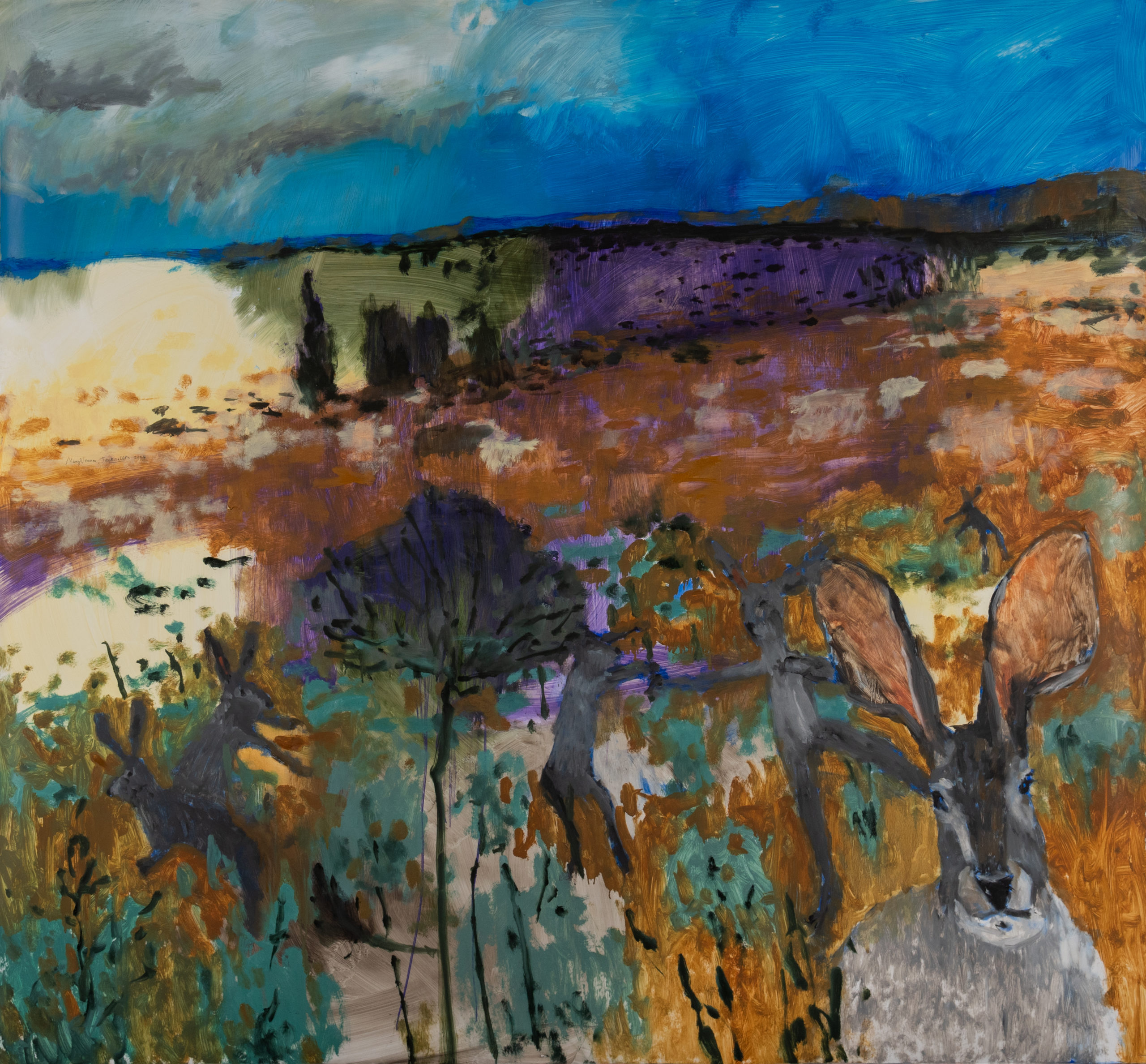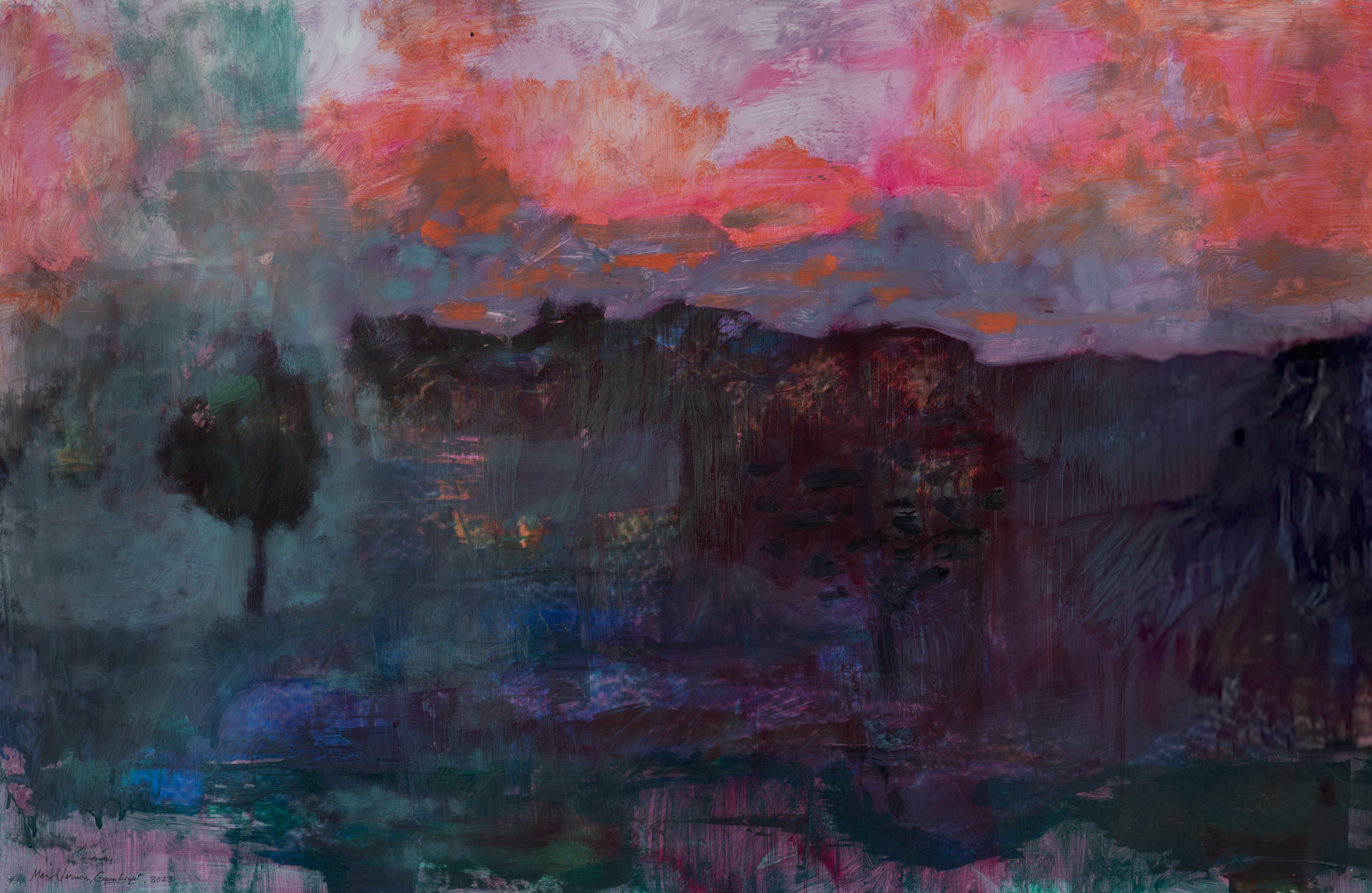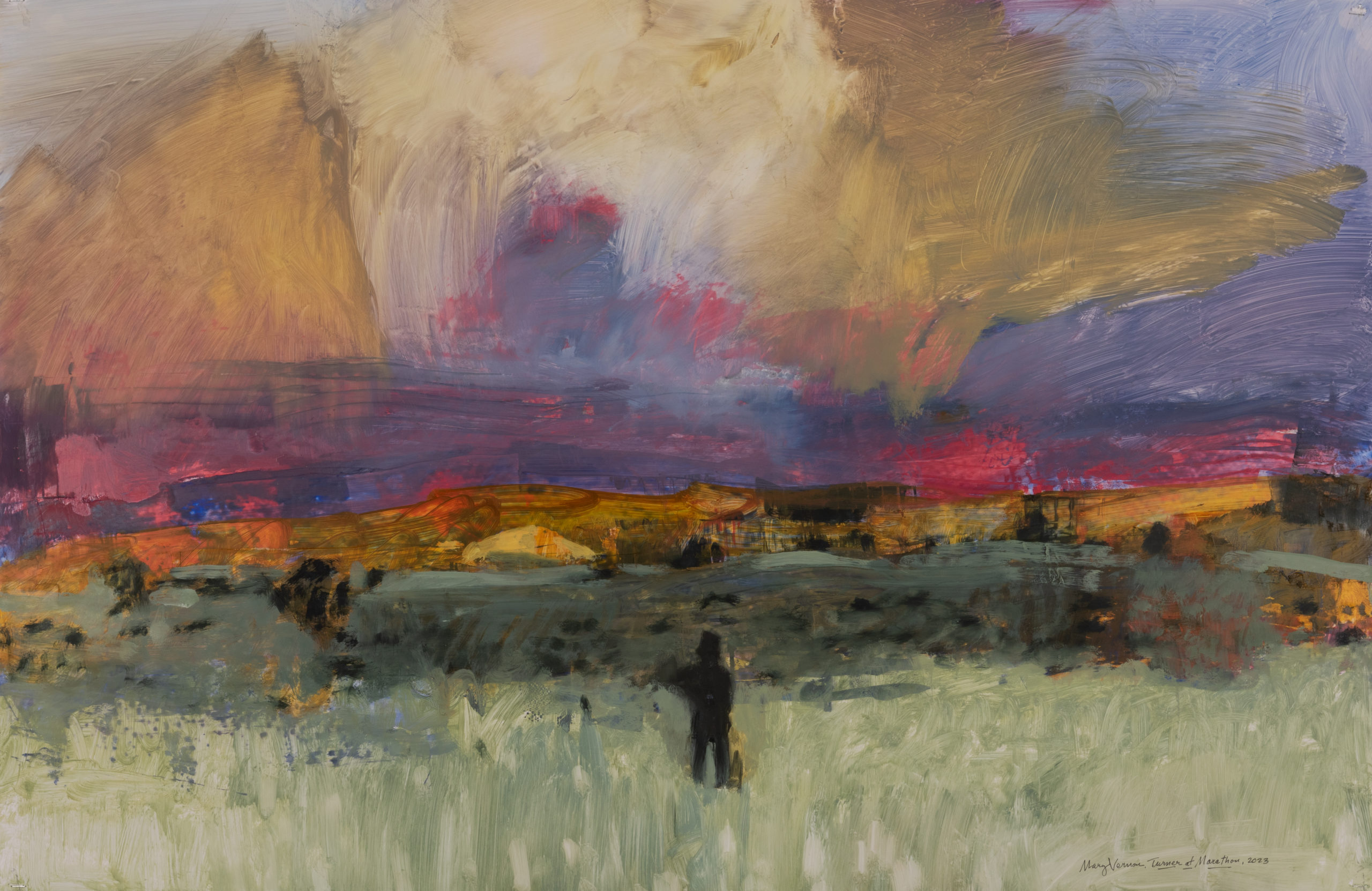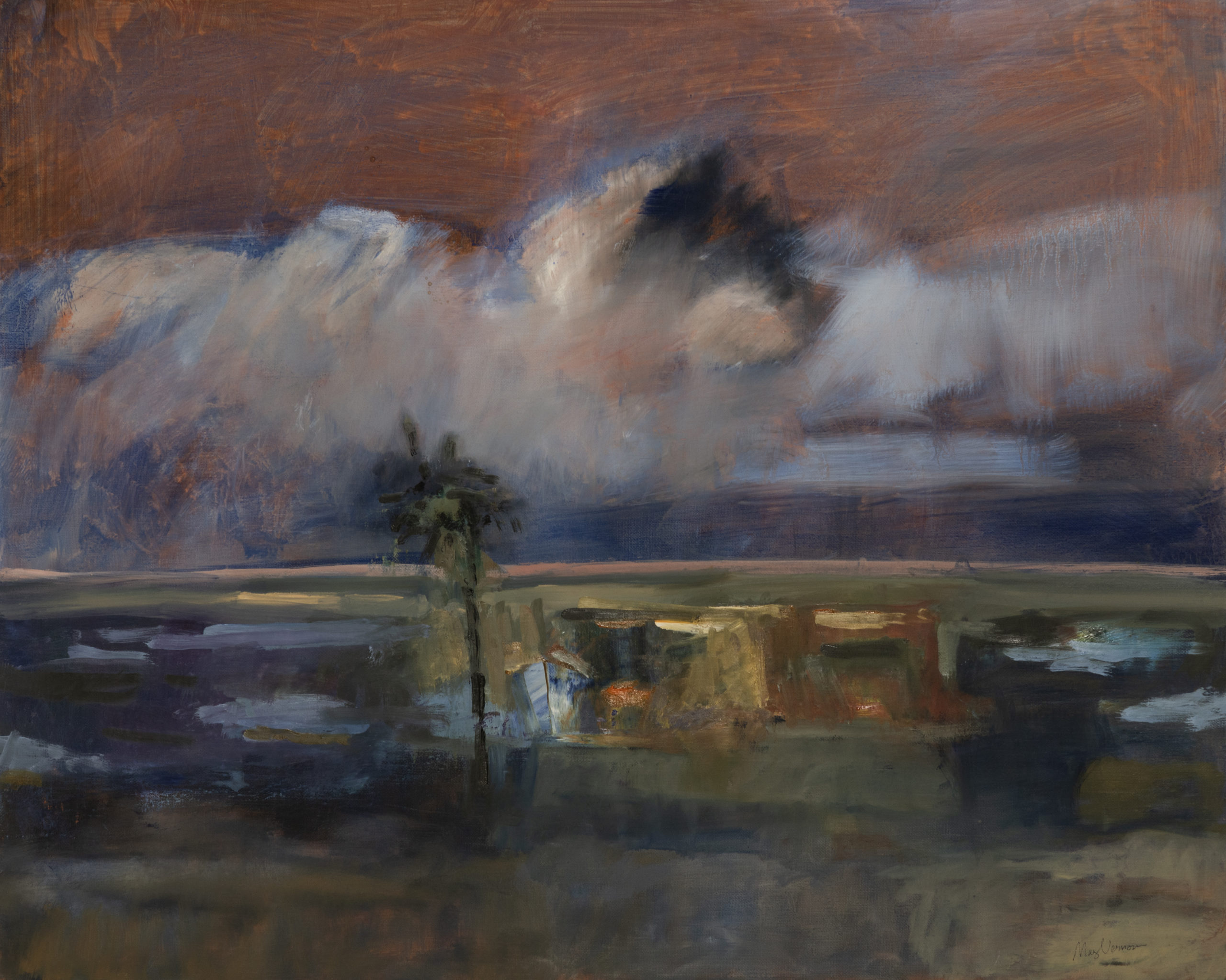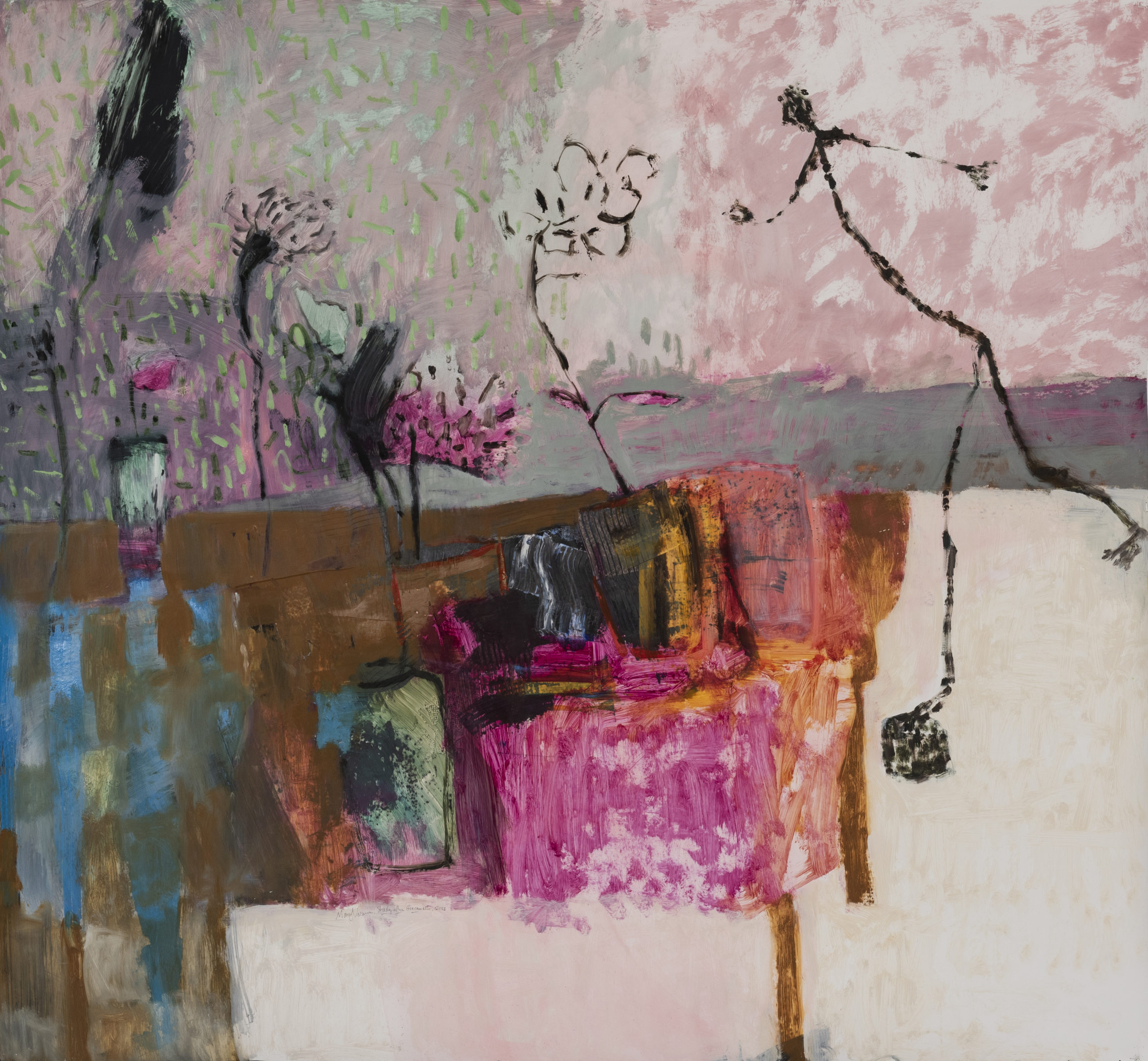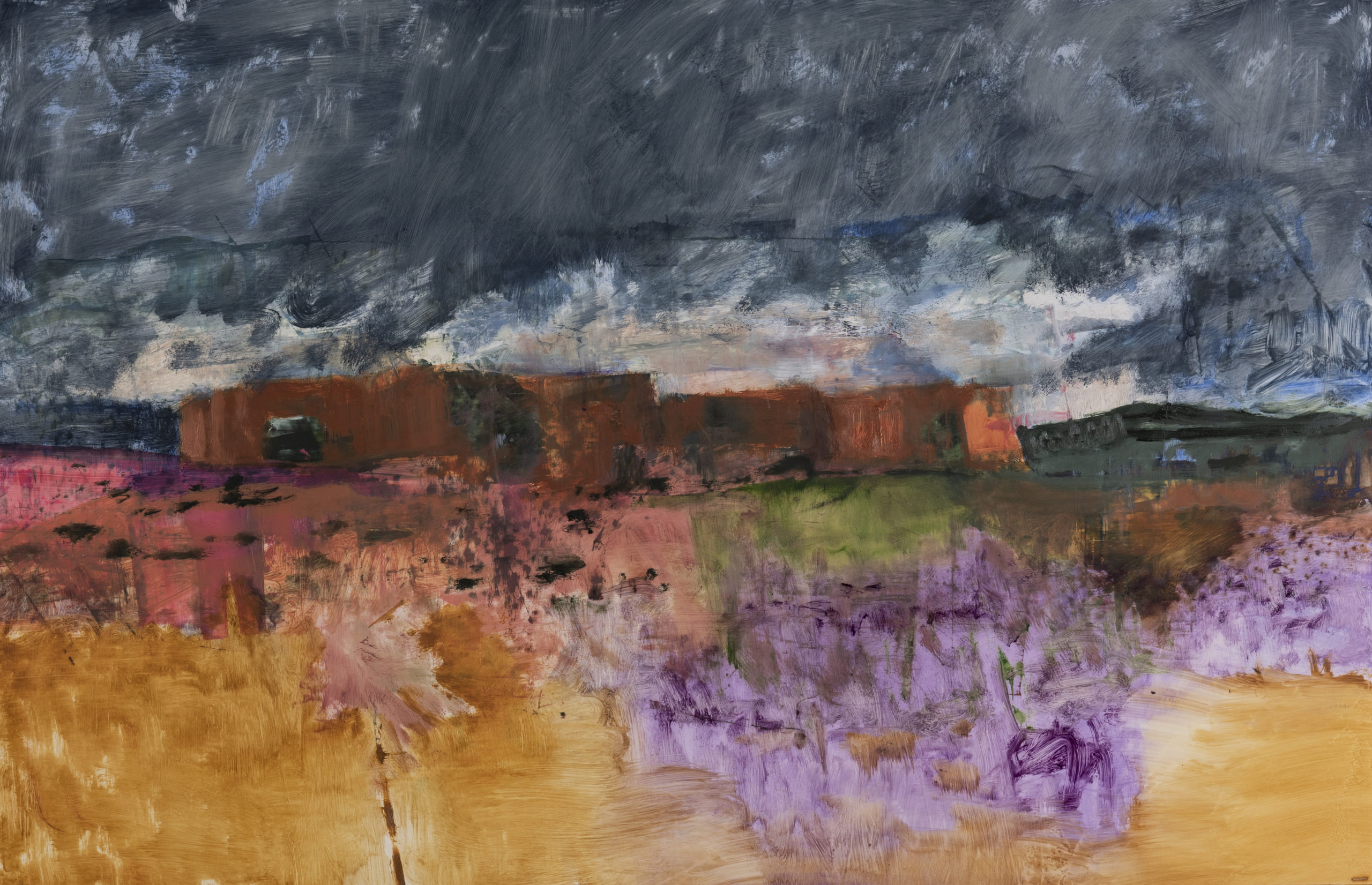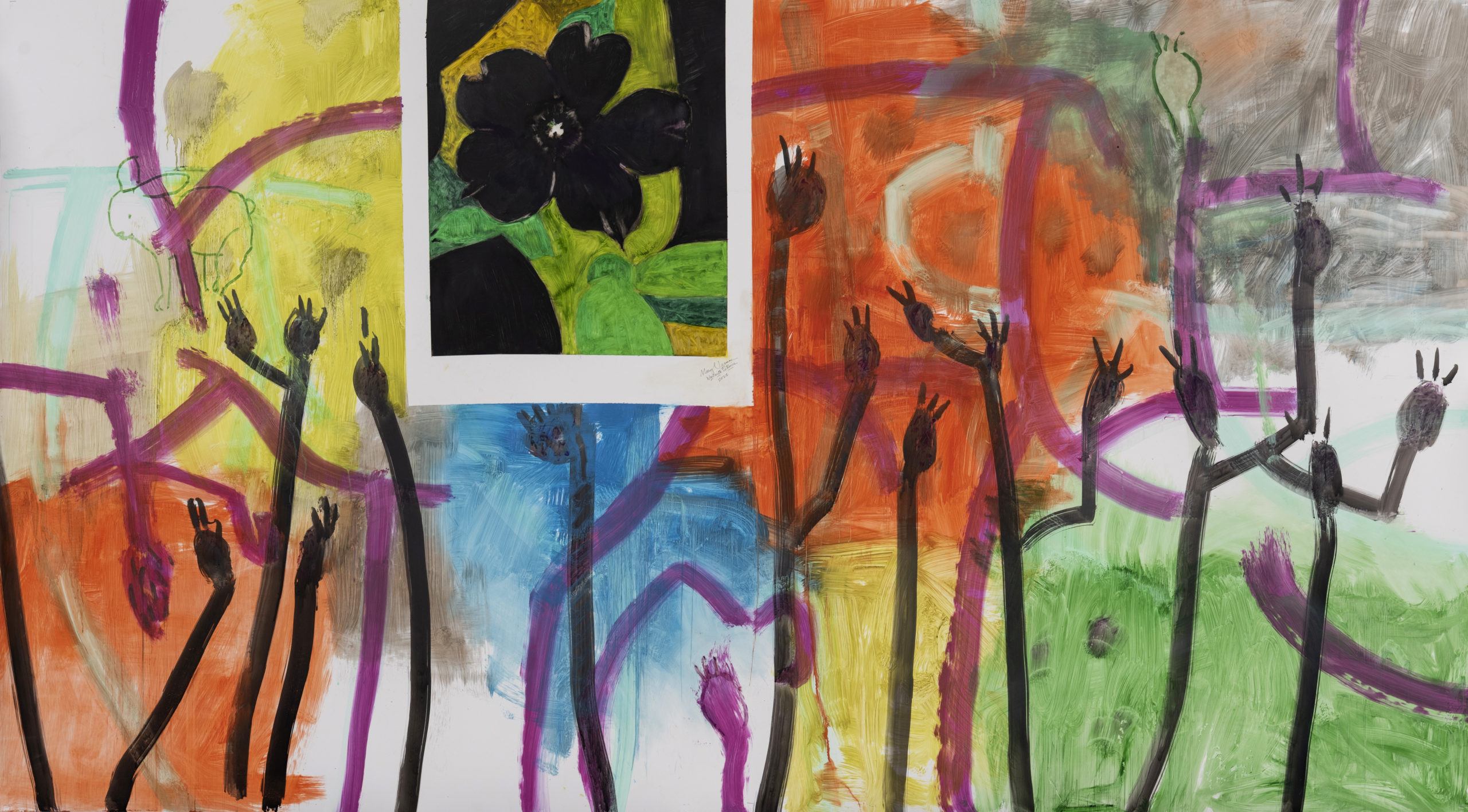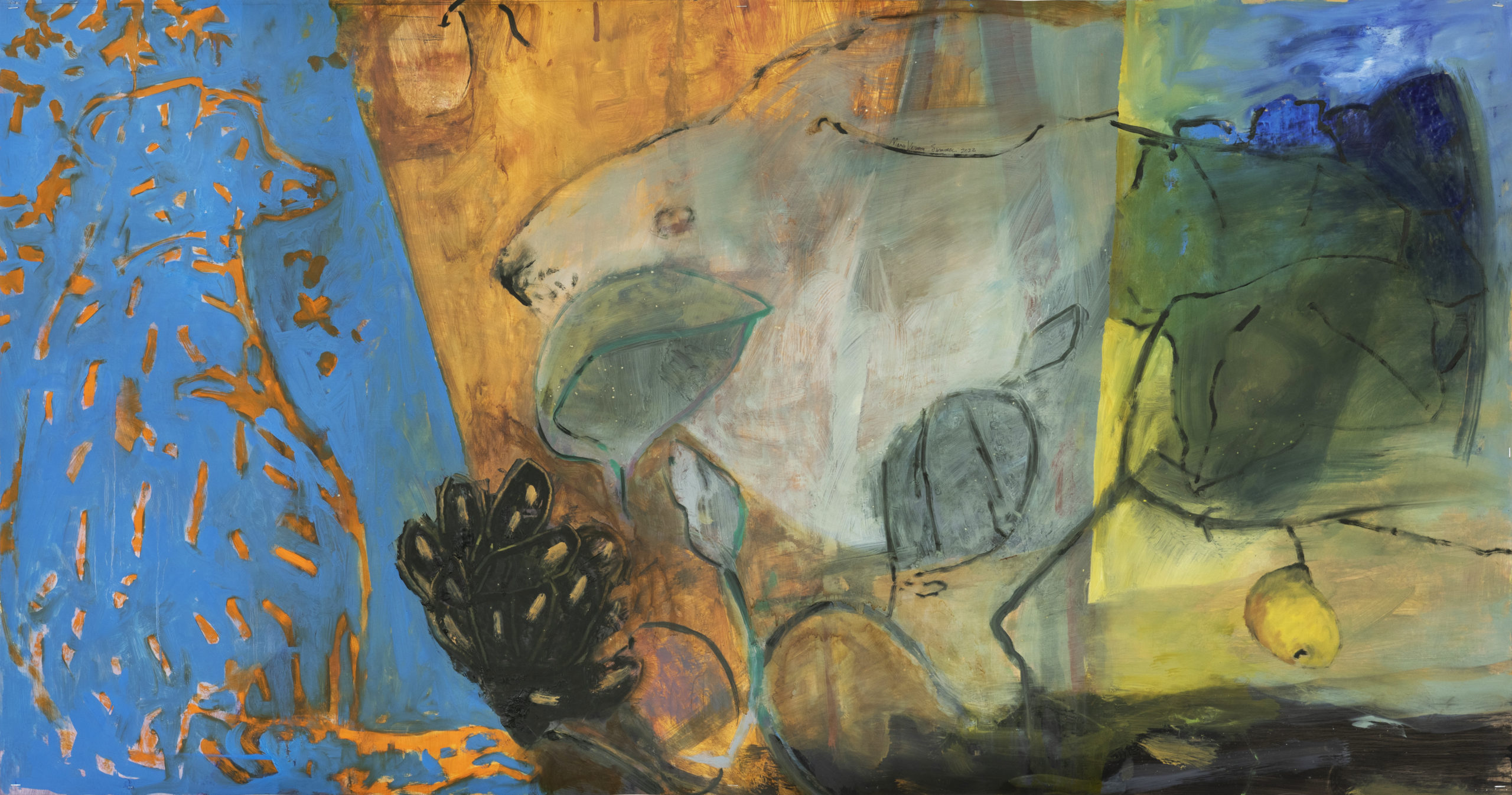I was there because my cousin’s best friend was a producer, and I had been swept along because I was visiting. It’s nice to go unnoticed at this kind of Hollywood party, where everyone is in the notice-me business. I wanted to be almost invisible, and I was. The grand, central room for the party, in this big, big house, was the two-story tall, mustard colored living room, filled with guests and with many sofas, most of them plum or maroon. On the walls, everywhere, were bad paintings, many of them by the host. This follows the universal fate that all actors eventually take up painting. I think that I saw Willem Dafoe, who, at that time, had not taken up painting. Later, naturally, he would. There was a very large and celebrated woman who would be noticed anywhere, in the center of the mustard room, wearing a squeaky green dress. Cocktails that I thought to be gimlets were being served to everyone from trays. The stemware was pale blue. The ghastly paintings, and so many of them, promised to give me a headache very soon (gimlets might speed the onset), so I wandered a bit.
I turned a corner into a tiny office – just a delicate French desk surrounded by gray silk wallpaper – and above the desk, on the wall, was a small work that reshuffled my knowledge of painting’s possibilities forever.
Who knows how long I was there, sitting in the desk chair. Long enough to understand this: I may have been seeing a landscape of emerald and wild yellow lawn, but it was much more. Behind yellow trees, a field of gray-violet stepping back on the right to a violet tree the color of a dusty raisin. And, near the center, a hanging flow of sparkling aquamarine – the very reason the painting was made, I think. It was both mountain and forest, spreading from ground to sky. Closer, those three thick fans of yellow trees. A suggestion of pink figures walking their dogs. Above, perhaps a sky at morning – lemon against which periwinkle clouds flew upwards. All the sensations were of food or jewels. Emerald on the ground, very cool. Egg yolk in the tousled trees, lettuces and turquoise, iron and wood. It was a high view over a park. I was held in a kind of charm that might make me a better painter.
Possible spaces in the image multiplied. The surface was knit together and compact. Every edge, where color met color or light met dark, was laid down with care, but often the color assumed to be behind was swelling forward. Dark set out as purple or chocolate in very narrow blocks; light held in the flow of the big aquamarine tree, in a mysterious blossom of white and blue at the left edge, and in the speckled lemon sky. It was as if a caravan of jeweled bundles traveled on its way across the land.
This work was about paint itself. The clusters of marks were not so much clouds or foliage or fences as they were the material, acting on its own. Where a field was grassy, chunks of coral dirt intruded. Blue greens met lime yellow greens as neighbors. Every form had its moment of focus, but then gave way to another. In tiny letters in dark green at the bottom: B O N N A R D.
My cousin just then appeared behind me and took my arm. “Come with me,” he said, “you have to see this.”
“Wait, wait,” I said. “You have to see this!”
“Good, OK, paintings later. This is happening now,” he said as he pulled me into the hall.
One last glimpse of the Bonnard, and I was hurried down the hall to the great mustard room. A crowd was cheering the very large and celebrated woman as she took off the squeaky green dress. Very soon, near naked but for green shoes, she was dancing.
My cousin’s best friend, the producer, declared that we had seen the highlight of the party now, and could leave. There were other parties just beginning somewhere. Out we went into the soft Hollywood night, driving under the silhouettes of palms, leaving behind forever the best painting in California.

